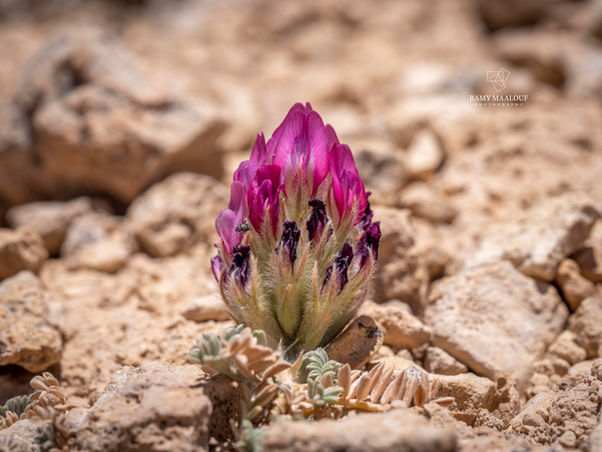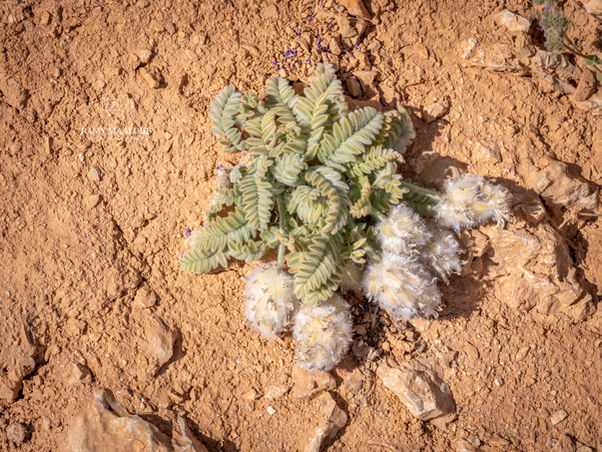Family |
Fabaceae
Astragalus kurnet-es-saudae
Eig

Endemic to Lebanon
Astragalus kurnet-es-saudae Eig
(Nouvelle Flore du Liban et de la Syrie, vol. 2, p. 343; 1969. First published in Systematic Studies in Astragalus of the Near East: 36, 1955)
• Life-form & habit: Dwarf perennial, very shortly caulescent, 3–5 cm tall, with rhizomes and subterranean herbaceous stems.
• Leaves: 1–3 cm long, densely silky-appressed, silvery-canescent, erect-spreading; 6–9 pairs of leaflets, slightly folded, rarely flat, oblong to subovate, shortly acuminate. Stipules sheathing, papery, white, hispid.
• Inflorescence & flowers: Peduncles short, shorter than the leaf and especially the capitulum, few or even solitary, borne at the branch apex. Capitula ovoid-globose, dense, many-flowered. Bracts lanceolate, 5–9 mm. Calyx 12–14 mm, densely covered with long spreading hairs; teeth about equalling the tube. Corolla slightly exceeding the calyx, pink.
• Fruit: Not known at the time of description.
• Phenology: Flowers July.
• Habitat & elevation: High alpine zone, rocky summits.
• Lebanese distribution: Confined to the highest parts of Mount Lebanon: Jabal Matrafé near Qornet es-Saouda (type locality), ‘Ayyoun Ourgouch and Aruba Moutain reaching Hermel.
• Native range: Endemic to Mount Lebanon.












